Eating at the End of the Earth
Sharing the Science of our Changing World through Food and Drink
This is the free version of my newsletter. If you want to support my writing (and receive free workshops and other resources as a thank you), please consider a paid subscription for yourself or a gift subscription for a friend.
You can also support my work on Patreon, starting at $1/month.
If you can't afford the paid newsletter, but it would be an asset to you in your own culinary/writing/creative journey, please reach out and we'll figure something out!
This August, I traveled to McCarthy Alaska, a remote town in Southeast Alaska nestled inside a national park. I came to share ferments and stories, and watch Rose McAdoo's glacier dessert magic in action (you might remember our Unplated interview from last year, which remains one of the most popular, and most inspiring, that I've done!)
Together with the culinary team at the McCarthy Lodge, we shared a dinner with guests, and alongside the bar team I crafted cocktails that matched each course and along with a community-focused finishing dish.
But unlike a regular meal, during this dinner each dish and drink to illustrate aspects of a changing climate, from ocean acidification to fire risk. While Rose and I did not write the dinner menu itself, we were able to use the menu as the basis of a compelling story: The story of change, community, and the very special place we found ourselves.
McCarthy Alaska is nestled in Wrangell-St. Elias National Park, the country's largest national park which is home to many glaciers and 4 mountain ranges, along with many of the nation's largest peaks. It also sits at the foot of Root glacier,which boasts one of the largest icefalls in the world! Its biodiversity and proximity to the Arctic Circle mean this area has witnessed rapidly changing environmental conditions (which you can read more about in the latest issue of Edible Alaska).
Rose and I both engage with place through our work in our own unique ways: Rose through creating edible and educational desserts about glaciers and other aspects of our amazing natural world, and me through wild fermentation and wild plants. Here is the menu, plus the cocktails, dessert, and conversation that we crafted:
The culinary wild dinner
Pre-dinner: Pickleback shot with Burlap & Barrel's Pickling Starter
Rose used to start off her dinners in Brooklyn with a pickleback shot to get everyone in a celebratory mood, and so after our intros we all did a shot together to settle into the evening.
As we enjoyed our shots, we thought about fermentation as a transformative act (and perhaps even one that can transform us as well as our food), and about the relationships between the taste, texture, and appearance of our food and the Alaskan wilderness.
Course 1: Warming
Kimchi jeon with smoked and fermented local veg
Cocktail: carrot, orange, jalapeno vodka, tajin rim
During this course, we talked about change and warming temperatures: A conversation especially relevant in Alaska, which is warming two times faster than the lower 48, and part of a larger conversation on change, place, and the impact of both on us through everything from changing harvest times to shifting foraging seasons and, of course, the impact of both on what can grow and what we can preserve. We pointed to this through the smoked and fermented local vegetables, many foraged or harvested and preserved months before and already finished growing by the time we arrived.
Course 2: Forest fires
Smoked coho salmon from Valdez with lemons, fireweed, and tasso ham
Cocktail: black tea liqueur, ginger liqueur, lemon-infused honey, soda, goldenrod vinegar spritz
A changing planet means increased forest fire risks, relevant to all of us but incredibly relevant to those living in very isolated space with a high fire risk. The smoked salmon and ham were an obvious pointer to smoke and fire, but so is the fireweed: One of the first plants to emerge in Alaska after a wildfire, and an important pioneer species in post-wildfire boreal forest succession.
Course 3: Interconnection
Spent grain-cured ribeye, fermented white beans, pickled potatoes with Julia's Irish sea spaghetti vinegar
Cocktail: spruce tip old fashioned with Irish whiskey
Here we tied in ingredients from the two continents I call home, as a way to illustrate the interconnection of our environmental choices even when we're oceans away on very distant, different coasts. The colors of the dish also evoked the white of the glacier surface alongside darker sediment-covered parts of the glacier's edge, offering us an opportunity to talk about glacier melt and the resulting ocean acidification that comes from increased freshwater (which is more acidic than salt water): Yet another example of our interconnected lives wherever we are on earth.
Dessert: Glaciers
Rose's jökulhlaup panna cotta dessert
Cocktail: Rose-infused vodka, grapefruit, fermented plum and apricot juice, soda.
Jökulhlaup is an Icelandic word that refers to a glacial outburst flood, caused by a glacier lake bursting through its edges and pouring out. On some glaciers, these happen rarely and spontaneously, but Root Glacier is a bit different: Its jökulhlaup happens yearly, around roughly the same time, flooding into the Kennicott River. It was also the first jökulhlaup that Rose experienced, so it's fitting, then, that we talked about glaciers at the place she first fell in love with them.
Glaciers are a critical part of the Alaskan landscape and of Alaskan ecosystems, but glaciers are rapidly changing and melting, and while Root Glacier's jökulhlaup is a regular occurrence, the same phenomenon elsewhere is not necessarily a positive development.
While we talked about glaciers, we also ate glaciers, and Rose's dessert was in my mind the real showstopper of the meal: two layers of panna cotta (one colored with blue spirulina to mimic packed blue glacier ice), a charcoal-tinted "glacier sediment" crumble, topped with a sheet of meringue. Once you crack through the meringue with your spoon, the liquid center of the dessert spills out, mimicking the water pouring from the glacier and down into the valley below (in this case, onto your plate).
Final bite: Community care
Fermented plums and apricots garnished with local fireweed, pineapple weed, and yarrow.
For the final, post-dessert bite, we wanted to offer an opportunity for action after an evening of listening and learning. We passed around these small bites on communal trays, along with a reminder of the communal nature of environmental stewardship. But there's another food-specific message here, too: When we participate in and share our ancient cooking and foraging traditions, the ones that have kept us connected to the land and kept us alive for millennia, we are strengthening our own presence as a bridge between the world of the past and the world of the future, and the role each of us plays in shaping that future.
Cultivating a sense of hope
Through food and drink, we encouraged guests’ curiosity and connection to place, and to leave with a sense of stewardship and community (rather than a sense of despair).
A meal is the perfect platform to inspire thoughtful conversation, and local ingredients inspire and reinforce connection to place
Food can offer a playful way to look at issues, but can also help those issues take root in our minds as we associate them with what and how we eat in ways we didn't before.
While "food builds community" can be overused and oversimplified, sharing food with community while having complex conversations can be a way to come at those discussions from a place of connection (over the issues or over the meal itself)
Am I saying a meal can fix the very real, and very pressing issues of a changing climate? Not at all. But one thing that can help the situation is for us to have conversations that foster a sense of care rather than paralysis or hopelessness.
A note of thanks
Thank you to Rose, to everyone on the culinary and bar teams at McCarthy Lodge, and to Neil Darish (and the rest of the staff at McCarthy Lodge) for bringing us to this magical place and making the event a success. And thank you to Jeremy Pataky at Edible Alaska for inviting us along to the launch party the day before!
Supporting this newsletter literally makes my dreams come true, helping me devote my time to writing and to sending more and better recipes, interviews, and food stories to you. Thank you for being a part of my work!


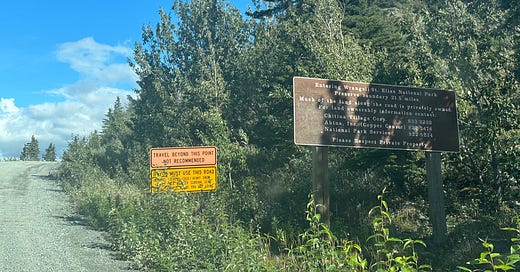




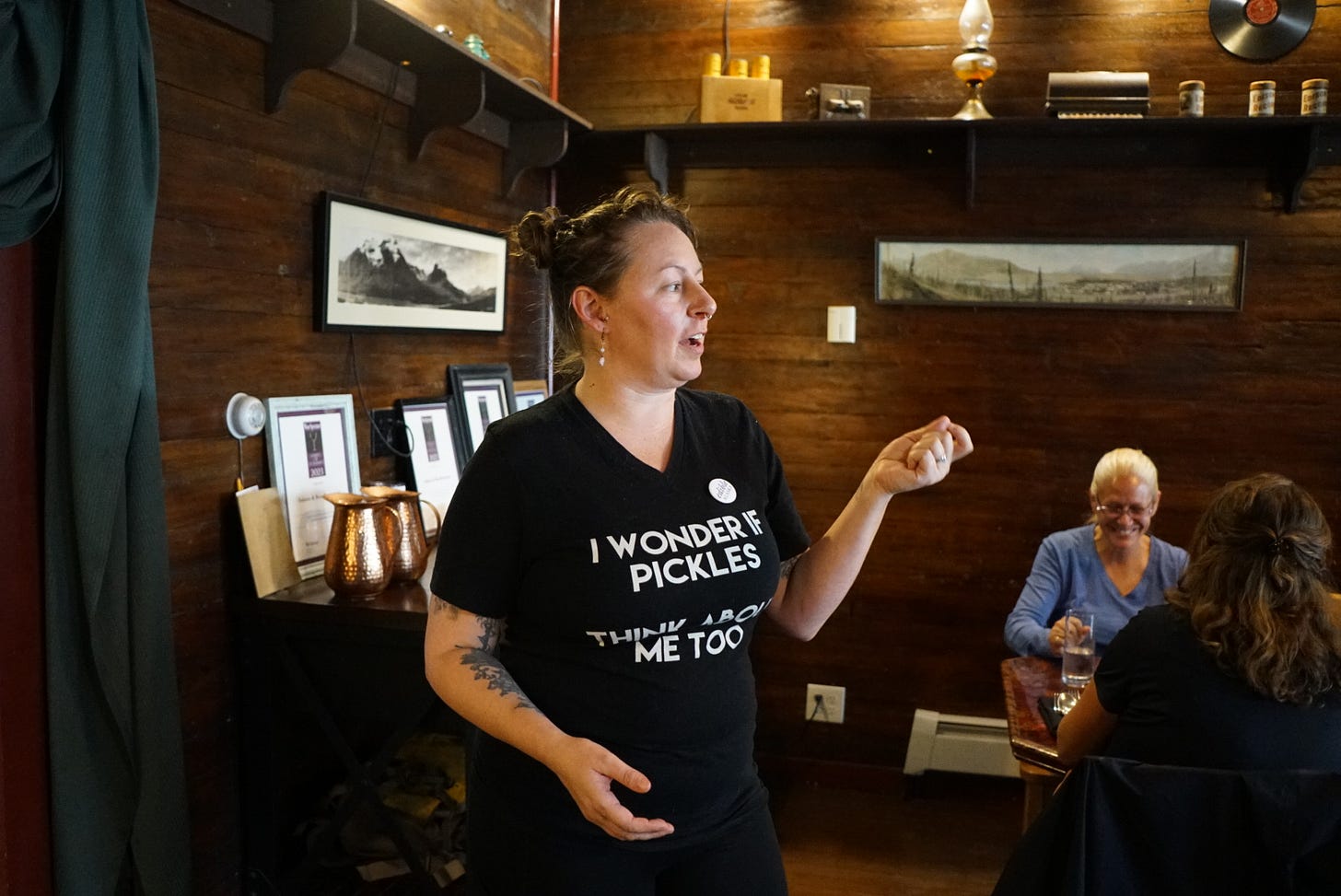
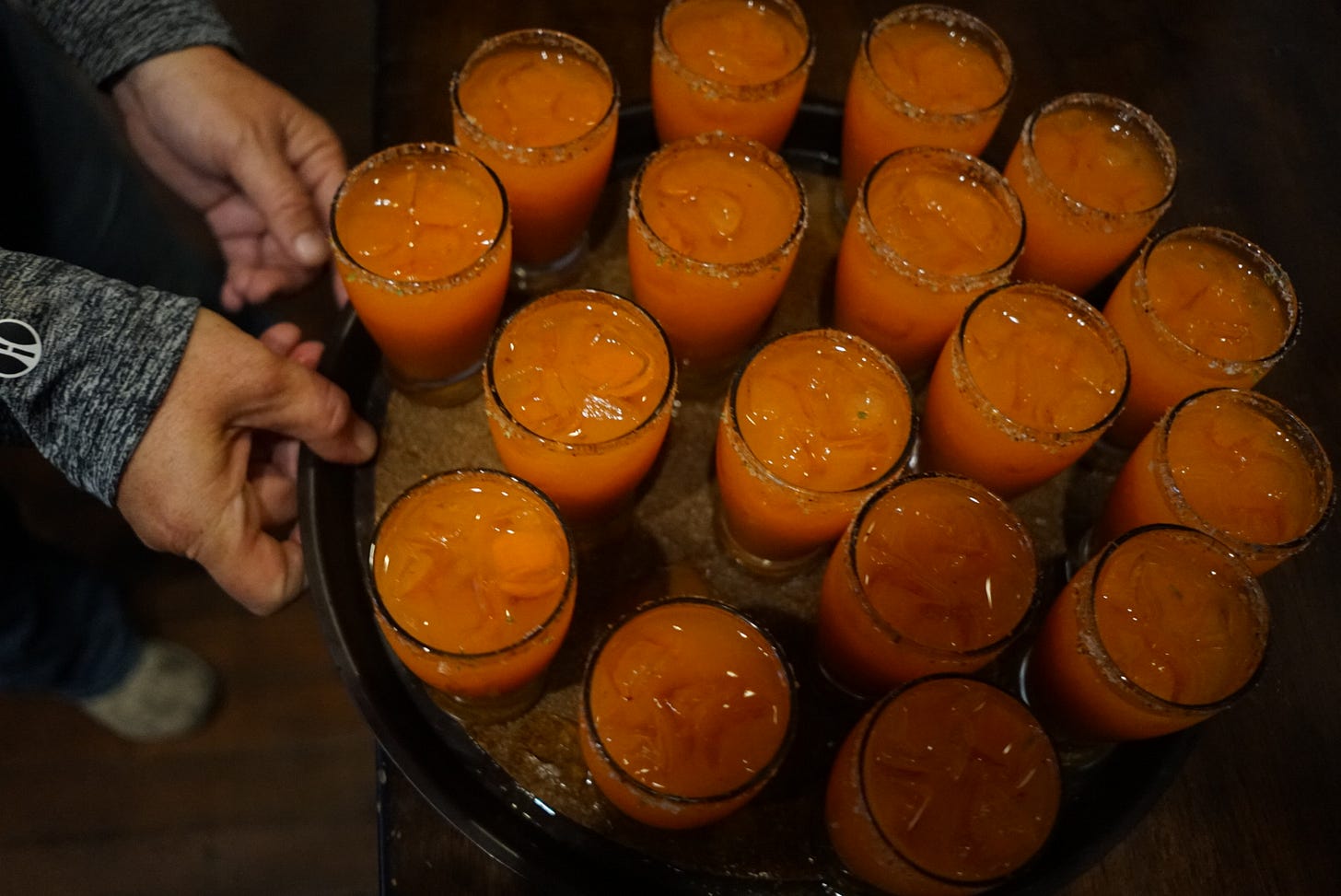
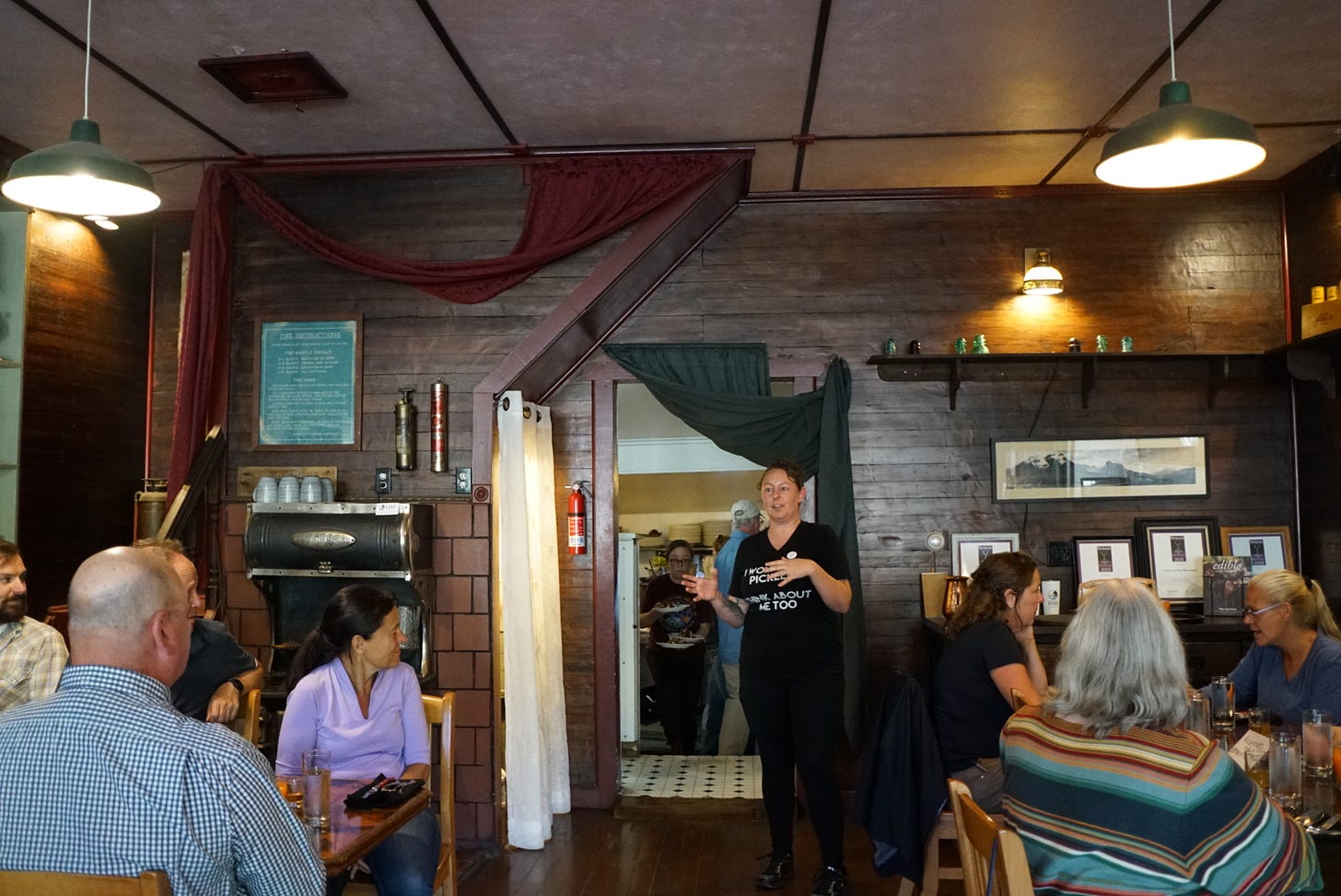
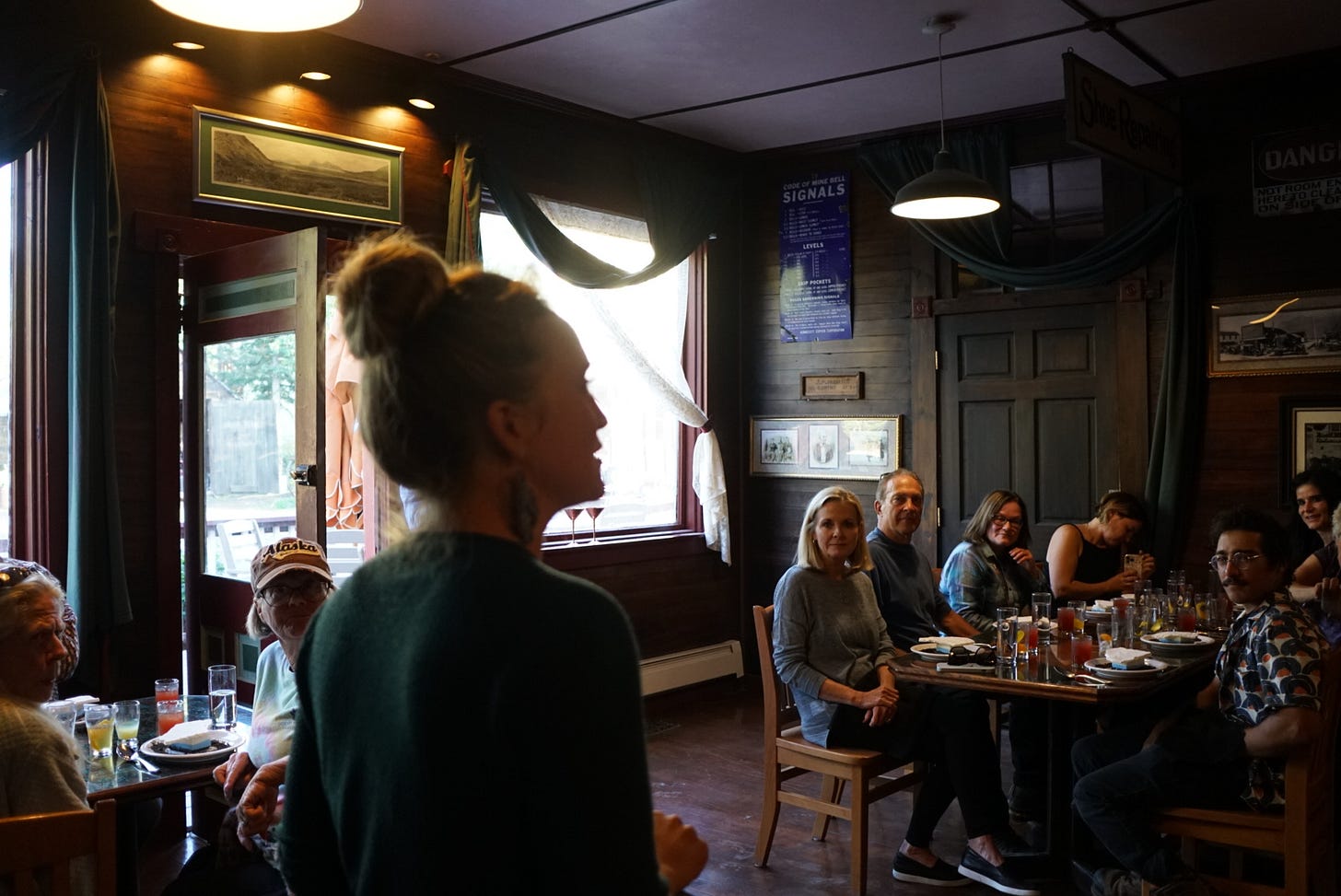
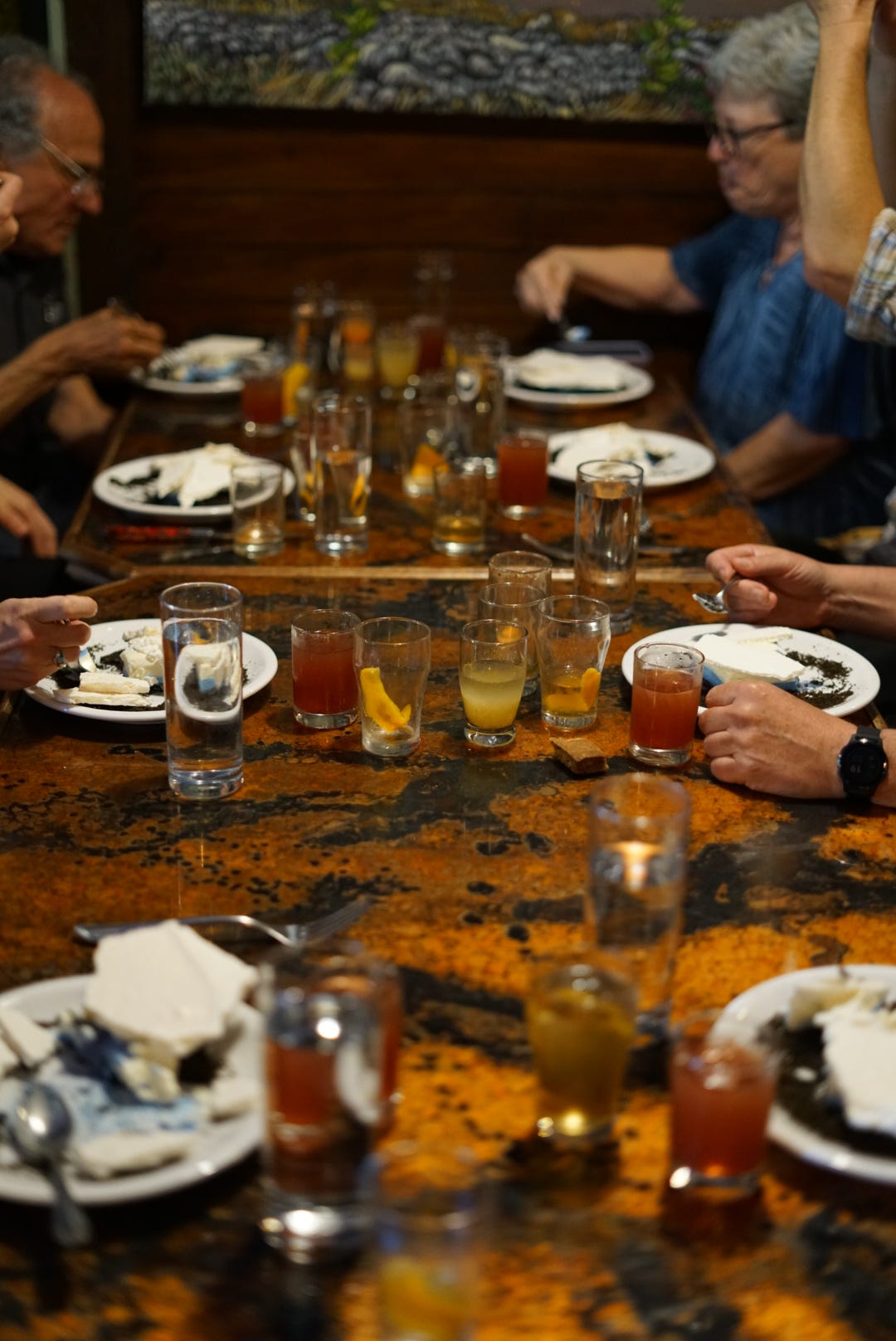
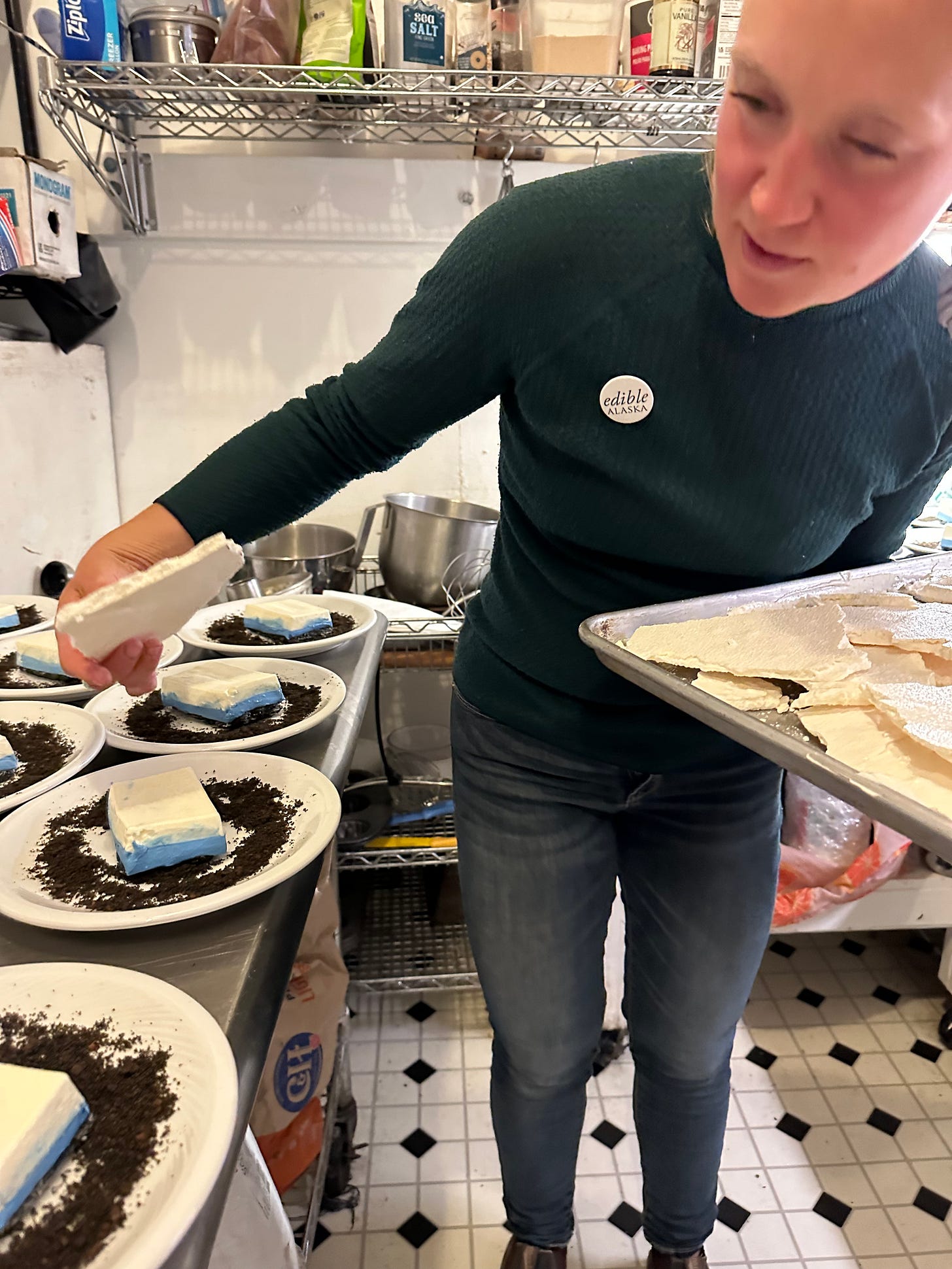
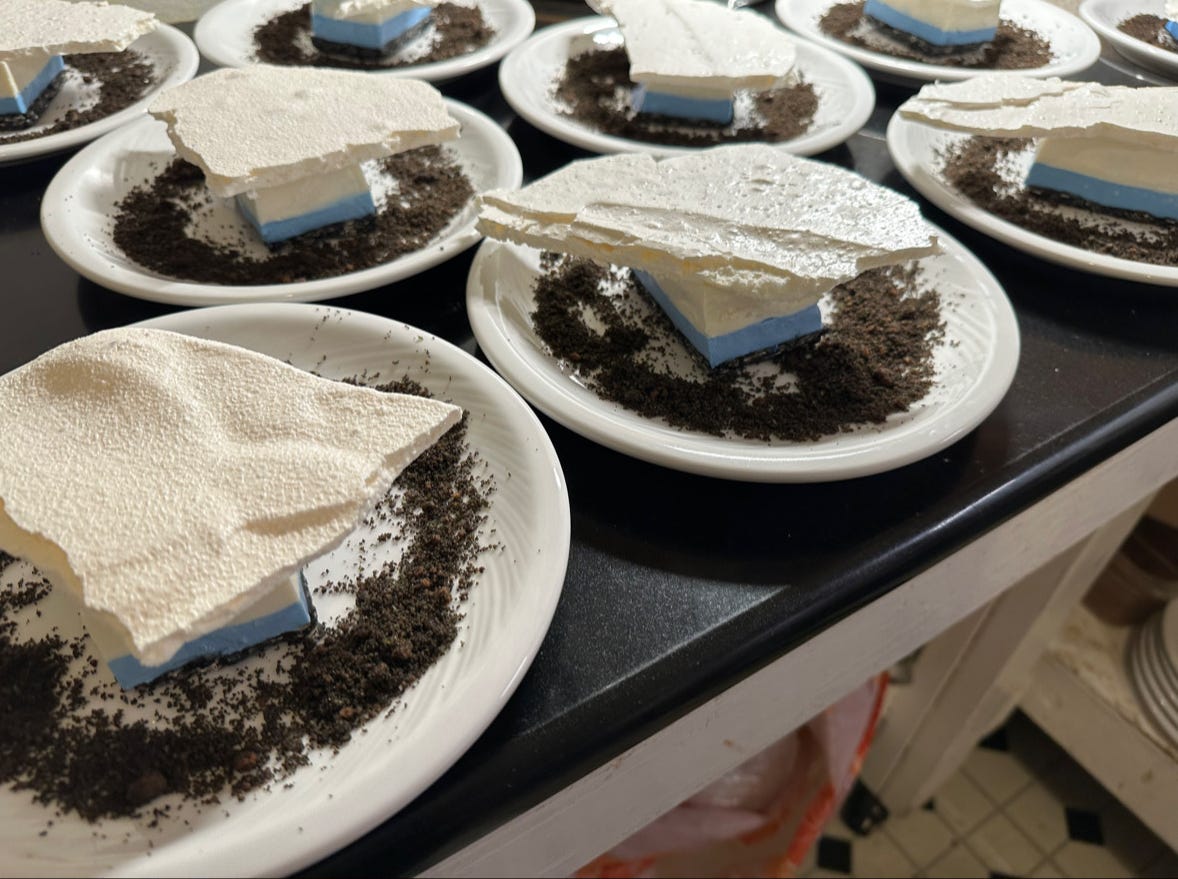
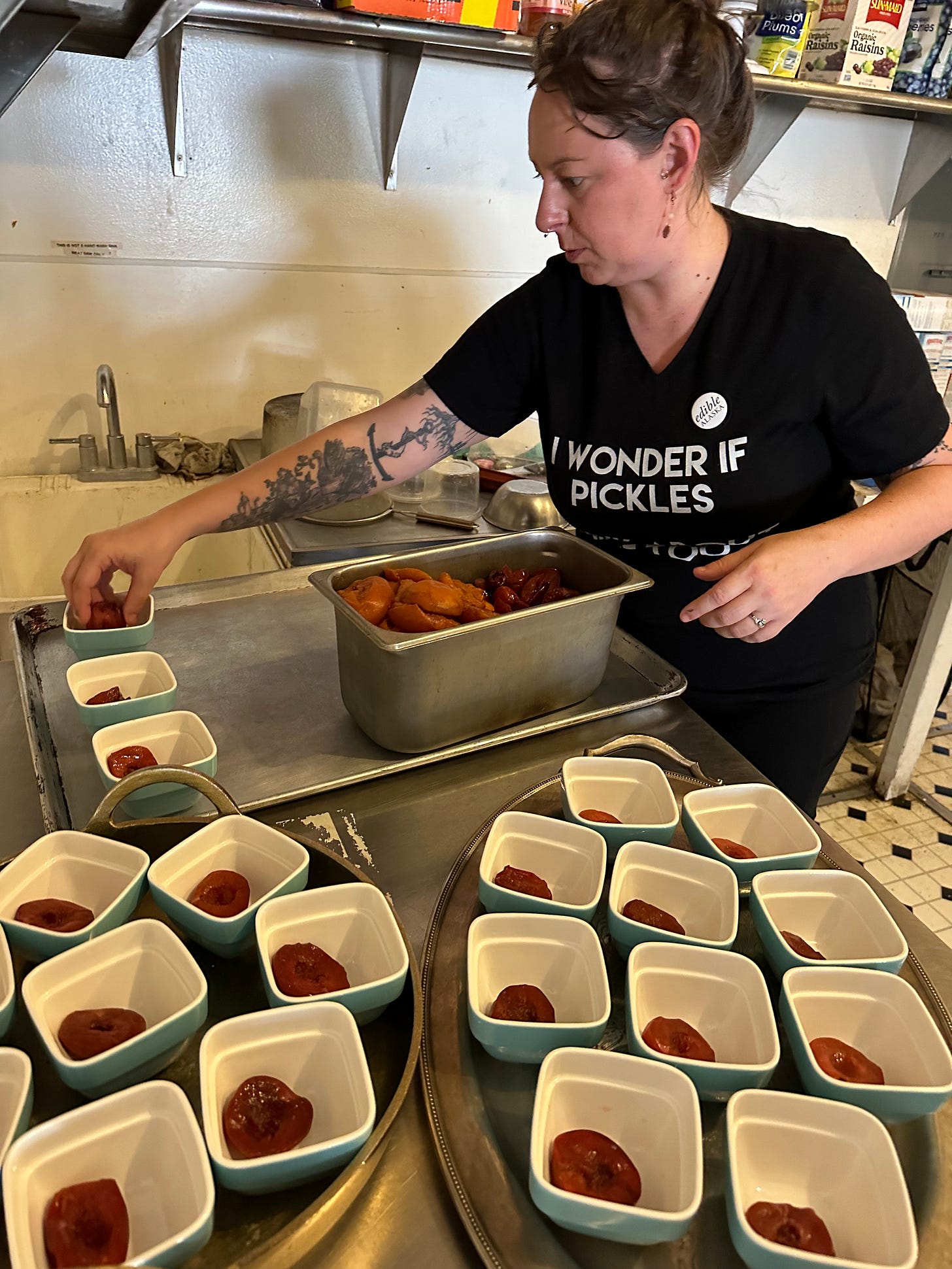
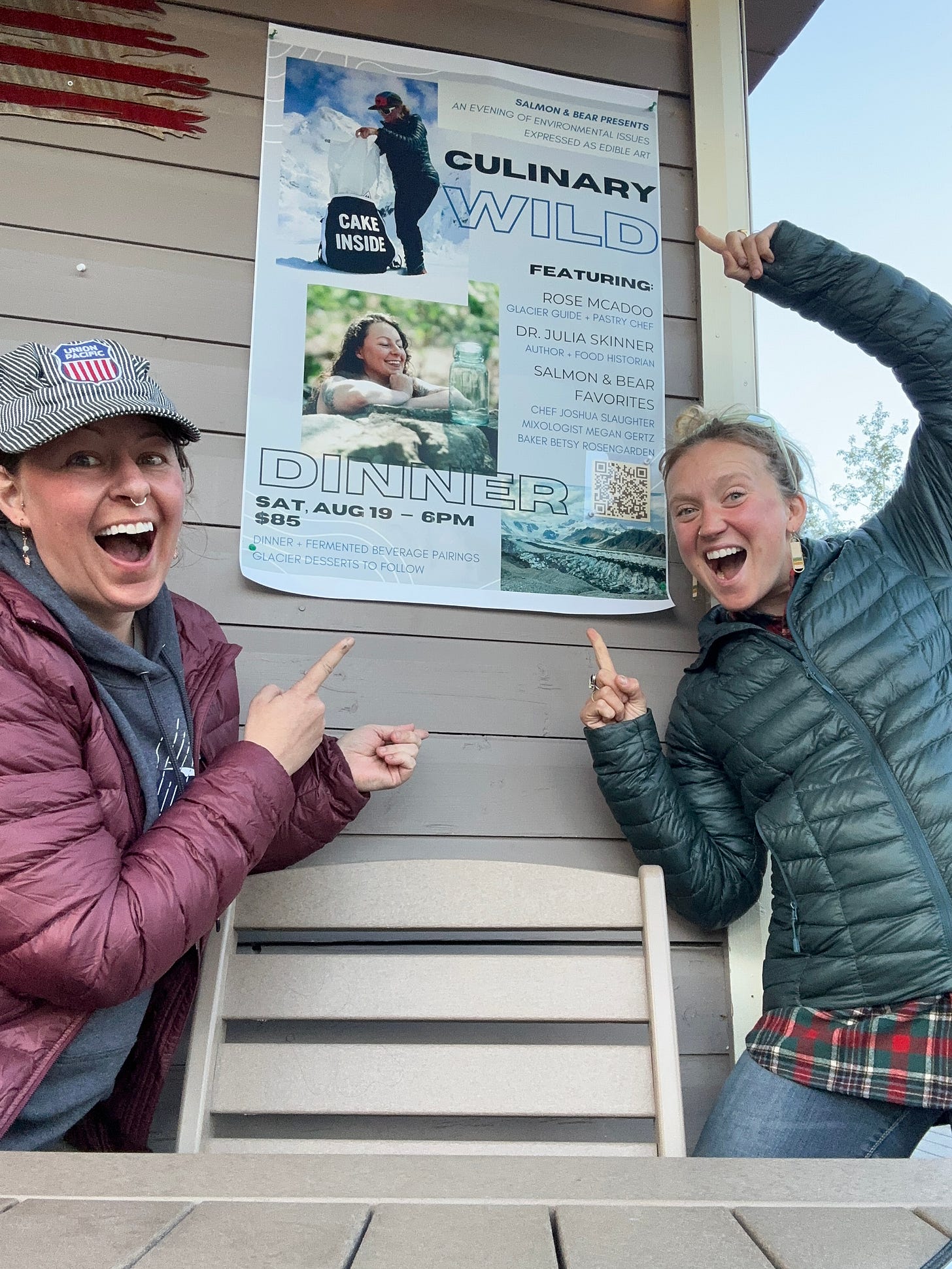
This sounds so ridiculously delicious and cool, I loved reading it. And a little kismet moment: I'm doing a story on Rose tomorrow that talks about this panna cotta—I'll mention and point to this story!! :)
What an amazing journey! Wish I could have been there. Amazing💕😘🙏